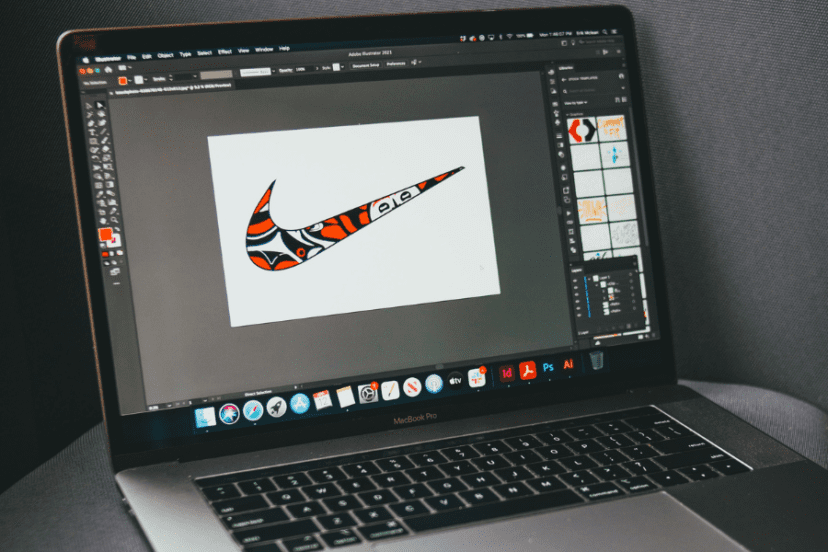Freelance Graphic Designer
Discover the Secrets to Success as a Freelance Graphic Designer
In today’s digital age, freelance graphic designers play a crucial role in the creative industry. They have the freedom to work on diverse projects, collaborate with clients worldwide, and enjoy the flexibility of managing their own schedules. But what does it mean to be a freelance graphic designer, and why should you consider it?
What is a Freelance Graphic Designer?
A freelance graphic designer is a self-employed professional who offers creative design services on a project-by-project basis.
Instead of being tied to a single employer, freelance designers have the freedom to choose their clients and projects, allowing for a more varied and dynamic work experience.
Advantages of Freelance Graphic Designing
Flexibility and Freedom
One of the primary advantages of freelancing is the ability to set your own schedule and work from anywhere. As a freelance graphic designer, you have the freedom to choose when and where you work, providing a level of flexibility that traditional employment cannot match.
Diverse Clientele
Freelancing exposes you to a wide range of clients from different industries and backgrounds. This diversity allows you to work on various projects, broaden your skillset, and build a versatile portfolio that showcases your capabilities to potential clients.
Higher Earning Potential
Unlike a fixed salary, freelancers have the opportunity to earn more based on their skills, experience, and the value they provide to clients. As you establish your reputation and expertise, you can command higher rates for your services, leading to increased earning potential.
Essential Skills for Freelance Graphic Designers
To thrive as a freelance graphic designer, it’s crucial to possess certain skills that will set you apart from the competition. Here are three essential skills that every freelance graphic designer should develop:
Proficiency in Design Software
As a graphic designer, you must be proficient in industry-standard design software such as Adobe Photoshop, Illustrator, and InDesign. Mastering these tools will enable you to bring your creative ideas to life and deliver high-quality design work to your clients.
Creativity and Design Sense
Creativity is the backbone of graphic design. Your ability to generate fresh and innovative ideas, coupled with a keen eye for design aesthetics, will allow you to produce visually appealing and impactful designs that resonate with your client’s target audience.
Time Management and Organization
Freelancing requires excellent time management and organizational skills. You’ll often juggle multiple projects simultaneously, so being able to prioritize tasks, meet deadlines, and efficiently manage your workflow is essential for success as a freelance graphic designer.
Building a Portfolio
A strong portfolio is your ticket to attracting clients and showcasing your skills as a freelance graphic designer. Here are some tips for building an impressive portfolio:
Showcasing Your Best Work
Select your best design projects that demonstrate your range, creativity, and technical skills. Include a variety of design samples, such as logos, brochures, websites, and branding materials, to highlight your versatility and expertise.
Highlighting Your Specialization
If you have a specific design specialization, such as web design, UI/UX design, or illustration, make sure to showcase your expertise in that area. Clients often seek specialized designers, so highlighting your niche can attract projects aligned with your passion and skills.
Including Client Testimonials
Ask satisfied clients for testimonials that speak about your professionalism, quality of work, and ability to meet deadlines. Testimonials provide social proof and instill confidence in potential clients, making them more likely to hire your services.
Finding Remote Work Opportunities
As a freelance graphic designer, you have the advantage of working remotely. Here are three effective strategies for finding remote work opportunities:
Online Freelance Platforms
Explore popular online freelance platforms like Upwork, Freelancer, and Fiverr. These platforms connect freelancers with clients from around the world, providing a vast pool of potential projects and collaborations. Create a compelling profile, showcase your portfolio, and actively bid on relevant projects to increase your chances of landing remote gigs.
Networking and Referrals
Networking plays a crucial role in the freelance world. Attend industry events, join design communities, and connect with other professionals in your field. Building relationships and maintaining a strong professional network can lead to referrals and recommendations, opening doors to new remote work opportunities.
Freelance Job Boards and Websites
Keep an eye on freelance job boards and websites that curate remote job postings specifically for graphic designers. Websites like Behance, Dribbble, and Designhill often feature freelance gigs and design contests that allow you to showcase your skills and win projects from clients worldwide.
Setting Your Rates and Negotiating Contracts
Determining your rates and negotiating contracts are essential aspects of freelance graphic design. Consider the following tips when setting your rates and engaging in contract negotiations:
Researching Industry Standards
Research the average rates for freelance graphic design services in your region and industry. This information will give you a baseline to work from and ensure that your rates are competitive and reflect the value you provide to clients.
Calculating Your Expenses and Time
Factor in your expenses, such as software subscriptions, equipment, and self-employment taxes, when determining your rates. Additionally, estimate the amount of time required to complete a project accurately, taking into account revisions and client communication.
Negotiating Fair Contracts
When entering into a contract, clearly outline the project scope, deliverables, timelines, and payment terms. Be prepared to negotiate and advocate for fair compensation based on the project’s complexity, your expertise, and the value you bring to the table.
Marketing Yourself as a Freelance Graphic Designer
To stand out in a competitive market, you must effectively market yourself as a freelance graphic designer. Here are three strategies to boost your visibility and attract clients:
Creating an Impressive Online Presence
Build a professional website or portfolio that showcases your work, expertise, and services. Optimize your website for search engines and ensure it reflects your unique design style and personality. Include a compelling bio, contact information, and links to your social media profiles.
Utilizing Social Media
Leverage social media platforms like Instagram, LinkedIn, and Twitter to showcase your design projects, share insights, and engage with the design community. Consistently post high-quality content, participate in relevant conversations, and network with potential clients and fellow designers.
Building Relationships with Clients
Word-of-mouth referrals are powerful in the freelance industry. Provide exceptional customer service, communicate effectively with clients, and strive to exceed their expectations. Satisfied clients will not only bring repeat business but also recommend your services to others.
Overcoming Challenges as a Freelancer
Freelancing comes with its fair share of challenges. Here are three common challenges faced by freelance graphic designers and how to overcome them:
Dealing with Irregular Income
Managing fluctuating income can be a challenge for freelancers. Develop a budgeting system that accounts for varying cash flow, set aside savings for lean periods, and consider taking on retainer clients or long-term projects to provide stability.
Managing Client Expectations
Clients may have unrealistic expectations or provide vague project briefs. Practice clear and frequent communication to ensure both parties are on the same page. Ask specific questions, offer your professional expertise, and provide regular updates to manage expectations effectively.
Balancing Work and Personal Life
Maintaining a healthy work-life balance is crucial as a freelancer. Establish boundaries, set realistic work hours, and prioritize self-care. Remember to take breaks, engage in hobbies, and spend time with loved ones to prevent burnout and maintain overall well-being.
Conclusion
Becoming a successful freelance graphic designer requires a combination of technical skills, business acumen, and effective self-marketing. By honing your craft, building a strong portfolio, networking, and adopting a proactive approach to finding remote work opportunities, you can embark on a fulfilling career as a freelance graphic designer. Embrace the challenges, continually enhance your skills, and strive for excellence to establish yourself as a sought-after professional in the design industry.
FAQs
1. Is it necessary to have a formal graphic design degree to become a freelance graphic designer?
While having a formal degree in graphic design can provide a strong foundation, it is not a strict requirement. Many successful freelance graphic designers have built their careers through self-learning, practical experience, and continuous skill development.
2. How do I handle difficult clients or disagreements during a project?
Maintaining open and clear communication is key when dealing with difficult clients or disagreements. Listen actively, seek common ground, offer solutions, and strive for a win-win outcome. If necessary, refer back to the terms outlined in your contract to resolve disputes.
3. What are the essential elements to include in a graphic design contract?
A graphic design contract should clearly define the project scope, deliverables, timelines, payment terms, copyright ownership, and any additional provisions or limitations. It is advisable to consult with a legal professional to ensure your contract protects your rights and interests.
4. How can I continue to grow and improve as a freelance graphic designer?
Continuous learning and professional development are crucial for growth as a freelance graphic designer. Stay updated on industry trends, learn new design techniques, and invest time in expanding your skill set. Seek feedback from clients and fellow designers to identify areas for improvement and strive for excellence in your work.
5. Are there any professional organizations or communities for freelance graphic designers?
Yes, there are several professional organizations and online communities specifically catering to freelance graphic designers. Some notable examples include AIGA, Creative Freelancers, and Freelancers Union. Engaging with these communities can provide networking opportunities, resources, and support throughout your freelance journey.




